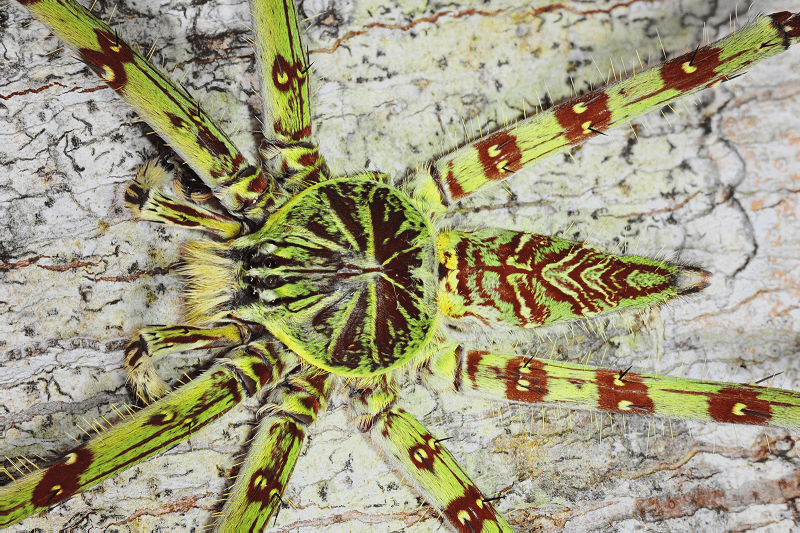Lichen Spider Facts
- Firstly, like many related arachnids, the Lichen Spider does not construct webs. Therefore, it depends upon its incredible camouflage and ability to squeeze into very small spaces to conceal itself.
- Also like most spiders, it hunts as an ambush predator, attacking prey by ambush. In fact, this remarkable invertebrate ranks among the fastest moving of all known types of spider.
- In addition, its natural coloring provides excellent concealment within the patches of lichen it favors. However, its coloring is fixed during its most recent molt, meaning it must remain in similar conditions.
- Finally, its venom is not especially harmful to humans, despite its comparatively large size. Therefore, bites rarely produce symptoms other than localized discomfort and swelling.
Related Articles

Lichen Spider Physical Description
While the Lichen Spider remains a rather impressive arachnid, it does not represent a particularly large one. That’s because mature specimens average a total leg span of roughly 1.5 in (4 cm).
Also, the color varies greatly between individuals, as it changes its appearance to blend in with its surroundings. This change remains a slow process, however, resulting from its periodic moulting.
A fascinating evolutionary adaptation has also given this creature 360-degree vision. It actually has four eyes on the front of its head, two on the top, and two on the back of the head.
- Kingdom: Animalia
- Phylum: Arthropoda
- Class: Arachnida
- Order: Araneae
- Family: Sparassidae
- Genus: Pandercetes
- Species: P. gracilis
Lichen Spider Distribution, Habitat, and Ecology
The Lichen Spider forms a rather remarkable variety of huntsman spider. It is endemic to Sulawesi, Papua New Guinea, the Maluku Islands, and also Queensland, Australia where it remains most prevalent.
This remarkable arachnid typically inhabits areas of rainforest but can also adapt to other regions when necessary. In its native habitats, it clings to the trunks or branches of trees that are covered with lichen.
This habit represents the source of its rather descriptive common name.
It also feeds on a wide variety of insects within the various local habitats.
This arachnid is not generally aggressive towards humans unless handled directly. The exception to this occurs among females guarding their egg sacs. At such times, the females will aggressively attack any creature approaching too near.
Species Sharing Its Range
Check out our other articles on Breathtaking Asian Species, Yellow-Eyed Penguin, Enchanted Well , Ascension Island Parsley Fern, Green Dragontail, Pink Fairy Armadillo, Jamaican Iguana
